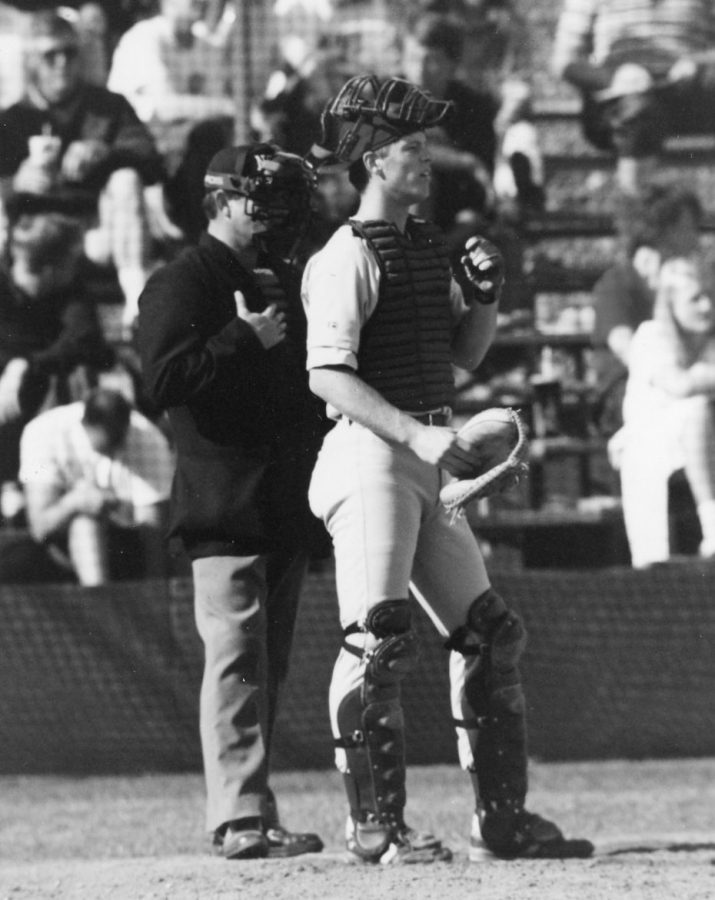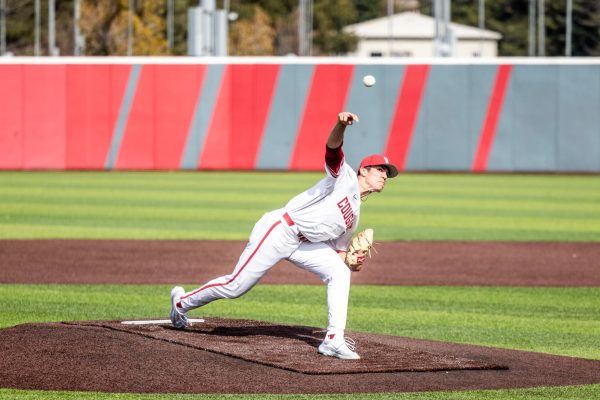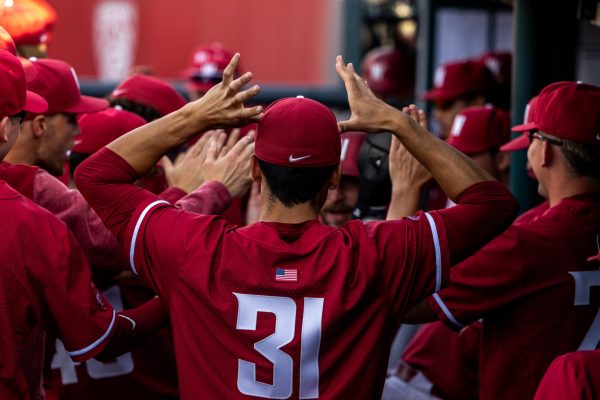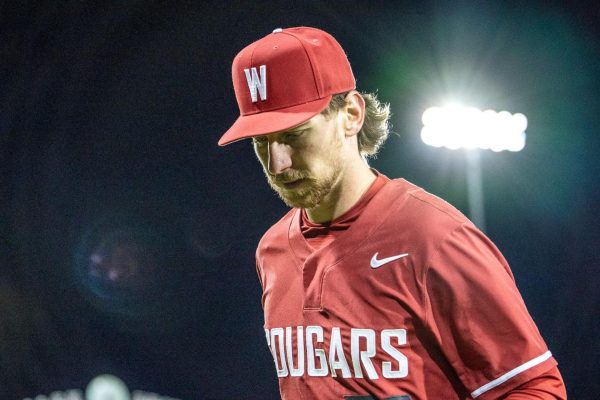Historic Cougs: Scott Hatteberg
Moneyball legend and Cougar great, “defect” or not
WSU catcher Scott Hatteberg during his tenure in Pullman, went on to be a vital part of “Moneyball” Oakland A’s
June 15, 2023
Those looking to find one of the great sports movies ever made will quickly find themselves at “Moneyball.” A movie about the Oakland Athletics’ approach to spending less money than other teams and making it work, it is a brilliant drama with great writing and fantastic acting.
When enjoying the movie, fans will be greeted by the presence of the now-action star Chris Pratt playing the role of Scott Hatteberg, someone who became a vital part of that A’s season and their success.
Hatteberg, a native of Salem, Oregon, played high school ball in Yakima, Washington. He suffered damage to his throwing arm, so teams were reluctant to give him a big-league shot at the catcher position. As the “Moneyball” A’s were known to do, they took the chance on the defect-riddled player by moving him to first base and reaped the benefits.
Arguably the more interesting part of Hatteberg is that he is a Coug. Playing in Pullman from 1989–91, he led the team in 1990 in hitting (.381), along with hits (88), total bases (145), slugging (.628) and tied a conference record with 29 doubles. He earned first-team All-Pac-10 North honors for the season.
In 1991, he was named team captain of the squad and produced at a higher level. He hit .365 with 21 doubles, securing Pac-10 North MVP honors and his second first-team All-Pac-10 honor.
In 2015 he was named to the WSU Hall of Fame, a well-deserved honor for his play in the Crimson and Gray.
Taking a jump past his playing career, he now resides in Gig Harbor, Washington, with his wife. Staying in Washington despite continued work as a special assistant to the A’s was an easy choice for him.
He and his wife met while at WSU, being just one of many love stories to come from the Palouse.
“My wife (Bitsy) is from Tacoma and we met in college and we bounced around a little bit while I was playing, but I fell in love with this area out here,” Hatteberg said in a 2011 interview.
Returning back to his playing career, the Boston Red Sox drafted the then-catcher in the 1991 MLB Draft between the first and second rounds.
Playing for the Red Sox from 1995–2001, Hatteberg was about a league-average hitter who put up a 98 OPS+ and 2.5 Wins Above Replacement. While he was not shattering records, he ate up valuable innings and did what was asked of him for the team.
Despite that success, it was when the A’s signed him that he really took off.
The 2002 season, the year that “Moneyball” is based on, was Hatteberg’s greatest individual season in the majors. While he was not an All-Star, he played well above average and did enough to play a significant role in a blockbuster movie.
That year he slashed .280/.374/.433 with 15 HR and 61 RBI. He walked 68 times to 56 strikeouts, being the perfect hitter for what the team was trying to do. Hatteberg did exactly what the movie points out was an undervalued skill at the time: he got on base.
Riding his newfound momentum, he played three more seasons in Oakland before playing three more for the Cincinnati Reds until his 2008 retirement.
He ended his career with 106 HR and a 101 OPS+, meaning that for his career, he was 1% better than the average major league.
Forever immortalized in “Moneyball,” Hatteberg is one of the most well-known professional Cougs ever, even though many viewers of the movie likely do not recognize that fact.


















Rick Poznanski • Jun 16, 2023 at 12:00 pm
Thata boy Hattie I knew you had it in you when you came to Eisenhower as a catcher and I had the honor of coaching you.